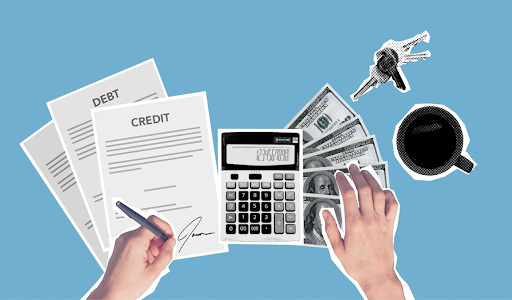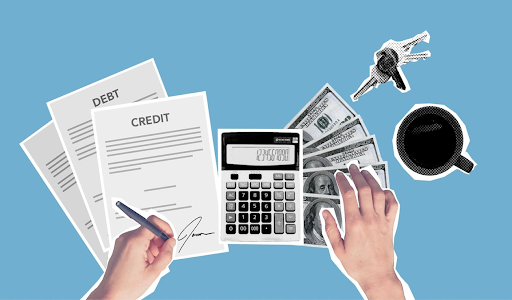
As the cost of living surges, many Americans are sinking deeper into debt just trying to stay afloat. Recent credit reporting agency Equifax data reveals that consumer debt balances hit a staggering $15 trillion in 2022, marking yet another record high. When accounting for mortgages, the average US household now carries over $155,000 in debt – an alarming increase of nearly 40% over the last decade.
This widespread indebtedness stems from various economic factors like rising inflation, job losses from recessions, or costly emergency expenses that drain savings. Whatever the cause, overwhelming debt often snowballs out of control before people even realize what is happening. Too many well-intentioned people want better lives for themselves and their families. But without vigilance, everyday expenses like groceries, rent, childcare, and healthcare can quietly accumulate on credit cards at high interest rates that dig into financial holes.
Defining Debt Relief
Debt relief constitutes legal, financial processes granting indebted individuals partial or total discharges of loan obligations through lender consent or court settlements. Negotiated interest/fee reductions, principal discounts, refinancing, settlement deals, and loan modifications all classify as debt relief avenues lowering money owed. Common methodologies include:
Debt Management Plans – Lump sum settlements paying portions to fully close accounts
Debt Consolidation – Combines multiple debts into a single loan with better terms.
Credit Counselling – Nonprofit guidance on debt reduction strategies
Debt Settlements – Lump sum payoffs through negotiated discounts on the total owed
Bankruptcy Filing – Court-mediated debt dismissal or repayment plans
When debts spiral into unmanageability, exploring appropriate options above responsibly limits further financial impacts while restoring stability. Each approach involves tradeoffs around cost, credit rating influence, and timeframes requiring case-by-case considerations.
Red Flags Signaling Debt Relief Needs
While good financial hygiene advocates maintaining manageable debt levels through timely bill payments – unforeseen circumstances can easily tip balances toward unviability. Warning signs below signal considering debt relief:
– Paying only minimums every month with no debt decrease
– Juggling multiple credit cards to cover necessities
– Making late fee-loaded payments, causing penalties to balloon
– Fielding relentless daily creditor calls pressuring for payments
– Preceding healthcare, car repairs, or home maintenance to pay bills
– Declining credit scores locking future affordable credit access
Any of the above indicates entering debt cycles requiring professional interventions before matters turn dire.
Weighing Debt Relief Approaches
With debt levels spanning a few thousand dollars across several cards or escalating into hundreds of thousands of dollars in complex mortgages, business debts, and more – solution paths differ. Assess the options below against individual circumstances:
Lower Balances (<$15k) – Debt Management Plans provide structured payment, lowering interest rates while settling debts usually in under five years with a nonprofit credit counselor.
Mid Balances ($15k -$100k) – Debt Settlement Companies legally negotiate discounted lump sum payoffs based on current economic hardship while halting creditor harassment. However, credit ratings are temporarily impacted for a few years, though ultimately, the reduction proves beneficial in the long term.
Complex Debts (Over $100k) – Bankruptcy legally discharges or restructures owed amounts through court settlements protecting assets like homes or cars. As a last resort, it lifts overwhelming fiscal burdens, though, with 10-year credit rating hits. Short-term pain enables longer-term gain.
Regardless of debt levels, acting sooner allows better outcomes versus allowing piled penalties and charges to keep ballooning balances unstoppably while wrecking creditworthiness.
Navigating Ethical Debt Relief
A debt-ridden, vulnerable state makes prime targets for unethical profit-seeking schemes falsely promising unrealistic loan forgiveness through misrepresented legal loopholes. Avoid companies:
– Charging expensive upfront fees with no progress guarantees
– Taking legal action against creditors without consent
– Asking to move properties out of name temporarily
– Pressuring document signing without reasonable review time
– Making unrealistic claims like quick 100% debt elimination
The affordable debt relief partners instead provide transparent quotes and realistic, measurable strategies and charge only upon successful implementation while contractually protecting clients’ best financial interests when tackling arduous debt. Scrutinize history, reviews, and lack of regulator complaints against shortlisted providers to avoid distressing missteps amid already taxing circumstances.
Managing Finances Post Debt Relief
Once selecting affordable debt solutions lifting unbearable burdens, the subsequent financial management proves equally important to prevent repeat indebtedness cycles from mismanaged spending roots like:
– Living beyond viable income thresholds
– Absence of savings padding unexpected costs
– Not budgeting adequately for stated needs
– Overspending on unnecessary discretionary purchases
– Poor credit usage habits carrying balances
– Financial illiteracy around money mechanics
Hence, desired behavioral shifts must address those fundamental gaps preventing sustainable growth through ongoing guidance from accredited financial counselors and nonprofits like NFCC offering certified mentorship. Learning prudent financial practices equips taking complete charge of money matters leading into the future.
Employing available ethical debt relief defenses first addresses short-term cash crunches while determinedly cultivating sensible money management skills to ensure swifter long-term financial recoveries. Through layered strategies coupling relief options with improved money mindfulness, individuals break unpleasant debt cycles that had once seemed inescapable burdens.
Seeking Tax Relief
As debt obligations overwhelm, corresponding tax payments on income further strain budgets. However, tax codes allow some exclusions like the IRS Fresh Start program, enabling middle/low-income taxpayers to negotiate lenient payments, partial interest reductions or suspensions through Installment Agreements, Currently Not Collectible, and Offer in Compromise provisions. This protects delinquents from harsh civil/criminal penalties or asset takeovers, buying time to recover finances. Tax attorneys provide immense value in navigating eligibility and optimal application strategies for IRS tax relief fitting personal contexts.
Refinancing Strategically
Mortgages and student loans also consume substantial portions of income, limiting flexibility. Yet refinancing options through recession-era reductions allow for lowering interest rates and monthly payments. Experts currently project an approaching economic downturn, making exploring refinancing appropriately timed. Seek trustworthy guidance around eligibility criteria and new terms implications for making refinancing determinations aligning with best interest rather than mainly lender profits.
Conclusion
During times of financial adversity, remembering the problem stays temporary, not permanent, helps persevere the passage towards stability. Setbacks accumulate gradually before realizing, therefore requiring gradual disciplined redressal without expecting overnight fixes. Debt relief pathways legally protect incomes, enabling recovery foundations. Simultaneously, addressing root money management weaknesses prevents repeat setbacks through professional mentorships and cultivating personal accountability around budgets and spending. Pinpoint the catalyst factors, seek assistance restructuring agreements, and commit to ongoing education around money mechanics – this layered blueprint rebuilds brighter futures no longer chained by past financial mistakes.









